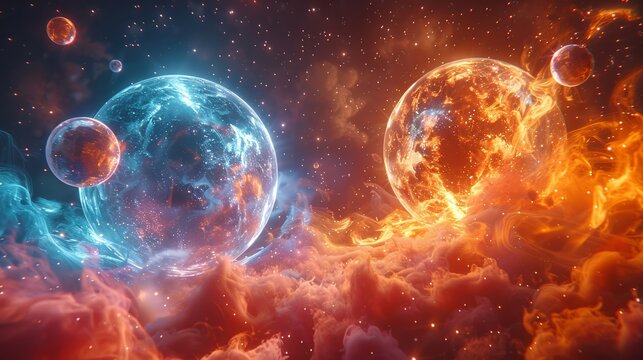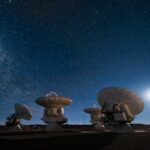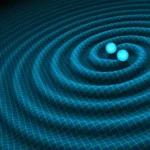At first glance, the question seems ridiculous. But believe it or not, physicists are grappling with the idea of a multiverse because it could solve two fundamental problems in cosmology. It sounds like the stuff of science fiction, but sometimes science itself can feel like an episode of Star Trek. So, why not entertain the idea for a bit? After all, the multiverse could explain not only the mysteries of the universe but also our disappointingly low subscriber count. (Just kidding—please subscribe!)
What’s Outside the Universe Anyway?
Let’s start with a classic head-scratcher: if the universe is expanding, what’s outside of it? Is there some cosmic barrier we can’t see, or do we simply hit the “end” of space? The idea of a multiverse—a collection of universes beyond our own—helps address this question. What if our universe is just one bubble in a vast sea of other universes, each with its own set of physical laws?
This might sound far-fetched, but physicists like the idea because it solves some of the puzzling fine-tuning problems in our own universe. If the physical constants of our universe, like the speed of light or the strength of gravity, were even slightly different, we wouldn’t be here. Life as we know it would be impossible. The odds of everything being “just right” seem astronomically low, unless, of course, there are countless other universes where things didn’t work out.
Fine-Tuning: Why Everything Has to Be Just Right
The physics of our universe is like an incredibly complex recipe. Imagine trying to bake a cake, but if you add even a pinch too much salt or sugar, the whole thing collapses. In the same way, if the fundamental forces of our universe were tweaked just a little, we’d either implode into nothingness or expand so rapidly that no structure could form. In other words, the universe has to walk a tightrope, balancing gravity, electromagnetism, nuclear forces, and more, just to exist in a stable way.
Take the number of dimensions we experience. Our universe has three spatial dimensions—length, width, and height—and one time dimension. Why three? Well, it turns out that three spatial dimensions are the only setup that allows for stable planets, atoms, and life. If there were four dimensions, planets would spiral out of orbit, and atoms would disintegrate. If there were only two, life as we know it would be flat—literally. How boring!
Infinite Universes, Infinite Possibilities
Here’s where the multiverse comes in. If there are infinite universes out there, each with slightly different physical laws, then it’s no surprise that we find ourselves in the one that “works.” In some other universe, maybe atoms don’t stick together, or maybe life looks completely different. In our universe, though, we got lucky. The conditions were just right for stars to form, for planets to orbit, and for life to evolve.
The multiverse explains this fine-tuning problem with a sort of cosmic lottery. If enough universes are created, one of them is bound to have the right conditions for life—ours just happens to be the winner. It’s like buying a million lottery tickets; eventually, one of them will hit the jackpot.
Did Our Universe Have a Perfect Start?
If the multiverse theory is true, then our universe is just one bubble in an infinite cosmic foam. But how did our universe get started? The answer lies in the Big Bang, the moment when our universe expanded from an incredibly hot, dense state into the cosmos we know today.
In the 1920s, Edwin Hubble (yep, the guy the telescope is named after) discovered that galaxies were moving away from us, meaning the universe is expanding. If we reverse time, the universe shrinks down to a tiny point—the singularity—which is the moment of the Big Bang.
The Big Bang itself is well-understood, at least after the first few fractions of a second. But what happened before that? And what caused the Big Bang in the first place? One idea is that the Big Bang was just one of many cosmic “pops” happening in the multiverse. Perhaps other universes are constantly being created, expanding, and evolving, just like ours.
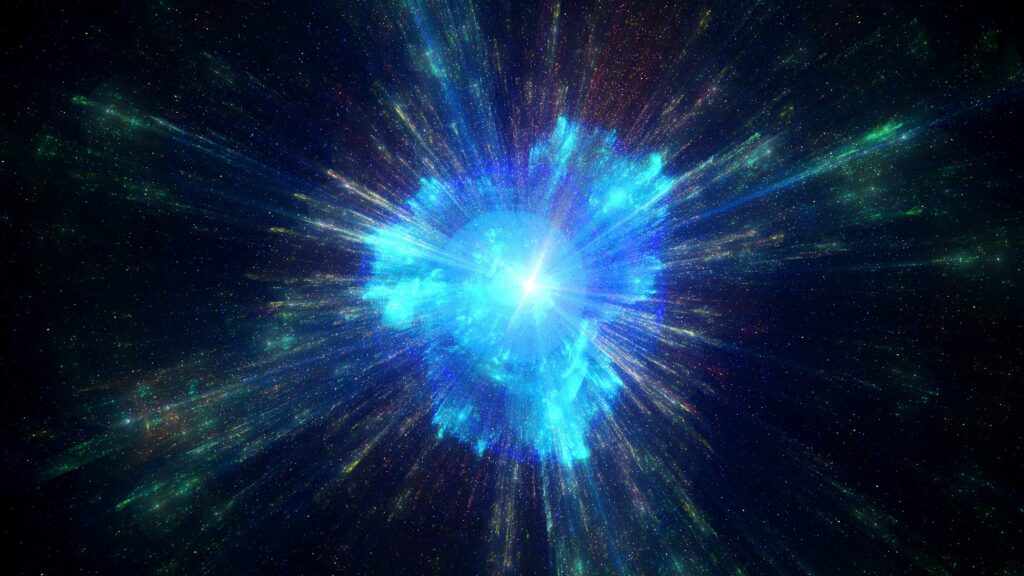
Inflation: The Cosmic Turbo Boost
A key part of this story is something called inflation, which sounds a bit like what happens to your waistband after a big meal, but is far more important to cosmology. In the moments after the Big Bang, the universe didn’t just expand—it exploded in size, growing exponentially in a fraction of a second. This sudden expansion smoothed out the universe, making it uniform and flat, like a perfectly rolled dough.
Without inflation, our universe wouldn’t look the way it does today. It would be bumpy and uneven, with regions of vastly different temperatures. Inflation explains why the universe appears homogeneous and isotropic (the same in all directions), even though it started as a chaotic, hot mess.
And here’s where things get wild: inflation might not have been unique to our universe. In fact, inflation might have been happening in multiple “pockets” of space, each giving rise to its own universe. Some of these universes might have fizzled out, while others, like ours, continued to expand and evolve.
Infinity of Universes
But wait—if there are infinite universes, does that mean the multiverse itself is infinite? This is where things get tricky. In mathematics, infinity is a tough concept to wrap your head around. You can’t just “create” infinity out of nowhere. If something is infinite, it’s always been infinite. So, if the multiverse is infinite, it must have always existed. This raises more philosophical questions than we have time to answer—like, what came before the multiverse?—but that’s a topic for another day.
In short, if the multiverse is infinite, then there’s no end to the number of universes out there. And if it’s finite, well, that’s still a lot of universes. Either way, the idea that our universe is just one of many helps explain some of the biggest mysteries in physics, like why our universe has the properties it does.
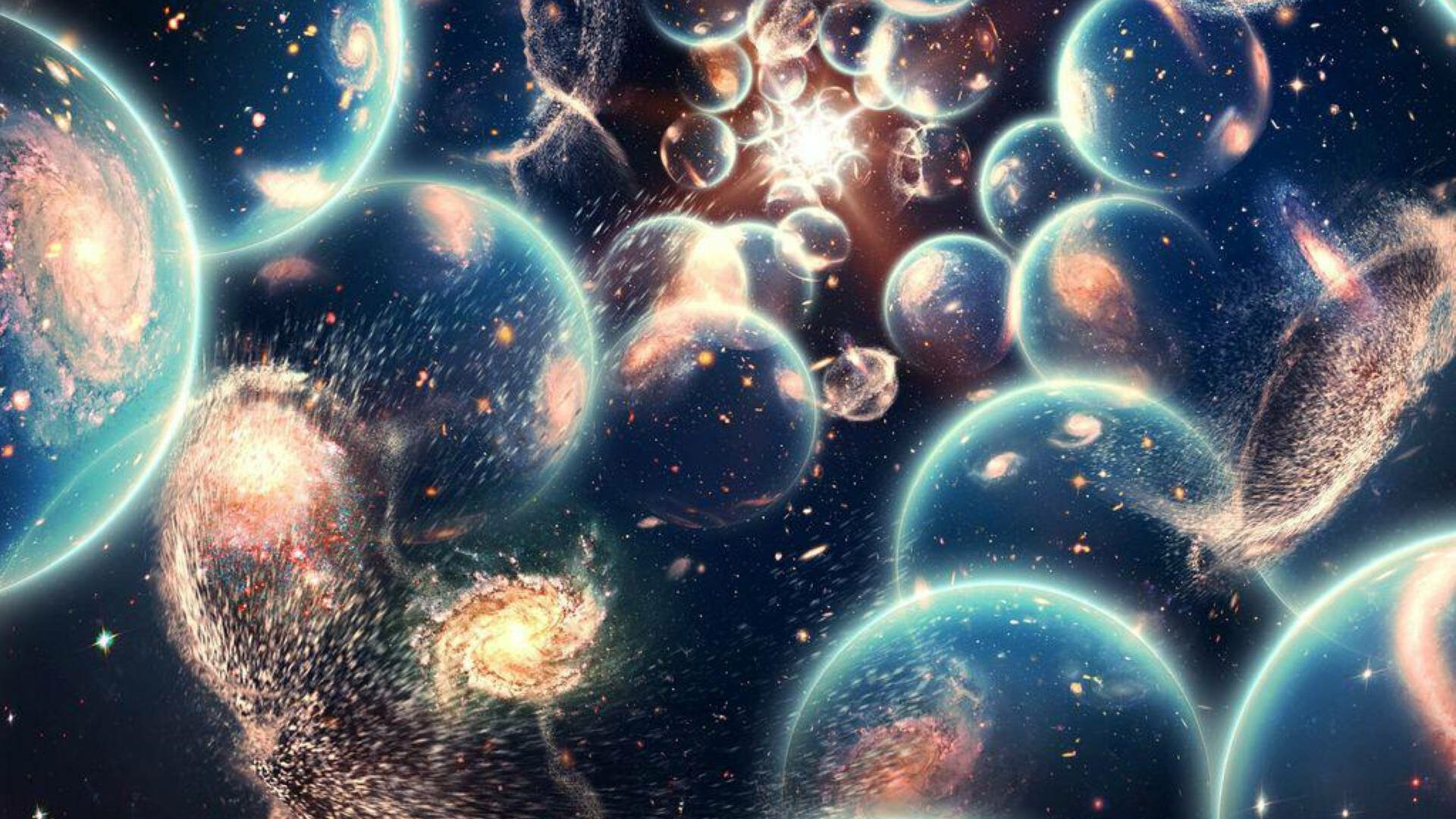
Can We Prove the Multiverse Exists?
Here’s the kicker: we have no direct evidence of the multiverse. Yet. Some scientists have tried to find clues that our universe is “bumping” into others. For example, in 2008, a team of researchers noticed that certain galaxy clusters seemed to be moving in the same direction—what they called dark flow. This movement was unaccounted for by our understanding of the universe’s expansion, leading some to speculate that a neighboring universe might be pulling on these clusters.
However, in 2013, data from the Planck satellite threw cold water on the idea, finding no evidence of dark flow. So, as of now, the multiverse remains an intriguing idea, but one without hard evidence.
What Would a Neighboring Universe Be Like?
If there are other universes, what would they look like? Would they have life? Could we ever visit them? Unfortunately, the answers are probably no, no, and no. Even if parallel universes exist, they would likely have different physical laws, making them incompatible with our own. The forces that hold atoms together might be weaker or stronger, gravity could work differently, or time might flow in strange ways.
In other words, even if we could observe another universe, it would be so alien that any kind of interaction would be impossible. Think of it like trying to have a conversation with a fish—you’re living in entirely different environments, governed by completely different rules.
Just a Thought Experiment
So, what’s the point of thinking about the multiverse if we can’t prove it exists, and we can’t visit other universes? Well, it’s a fantastic mental exercise. The multiverse forces us to think about the nature of reality and our place in the cosmos. It also opens up new possibilities for solving some of physics’ biggest questions, like the fine-tuning problem and the origins of the universe.
In a way, the multiverse is a cosmic thought experiment. Even if we never find direct evidence, the very act of considering other universes helps expand our understanding of our own. And who knows? Maybe one day, with the right technology, we’ll find a way to peek into another universe.
Are We Alone in the Multiverse?
In the end, the question of whether we’re alone in the multiverse might never be answered. But that doesn’t make the search any less exciting. Whether or not other universes exist, the multiverse offers a tantalizing glimpse into the vast possibilities of reality. And even if we can never visit these other universes, the fact that we’re thinking about them at all is a testament to the boundless curiosity of the human mind.
So, are we alone in the multiverse? Maybe. But even if we are, that just means our universe is all the more special—one of countless possibilities, and yet, it’s the one we call home.

